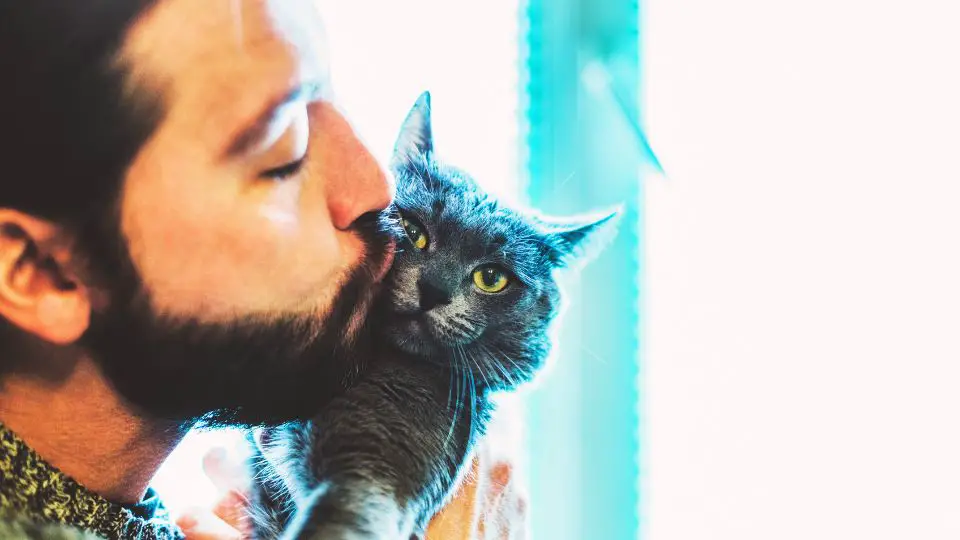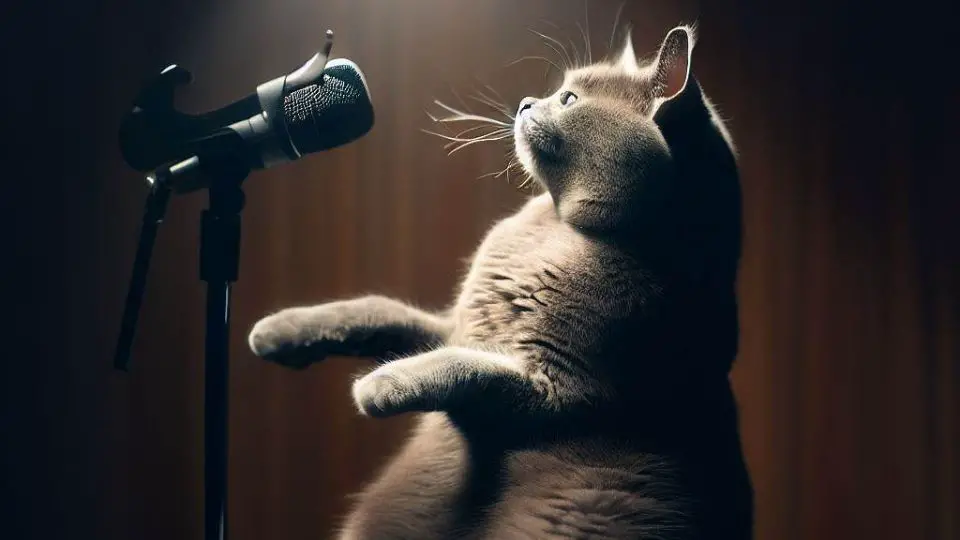Considering adding a British Shorthair cat to your family? It’s essential to gather the necessary information and ensure you’re fully prepared for the responsibilities that come with being a cat owner.
Before bringing a British Shorthair into your home, there are several important factors to consider. From their unique characteristics and care needs to the commitment required, knowing what to expect will help you make an informed decision.
In this article, we will explore what you need to know before getting a British Shorthair cat, ensuring a smooth and fulfilling journey with your new feline companion.
Understand the breed
Before welcoming a British Shorthair cat into your home, it’s important to research and familiarize yourself with the breed.
British Shorthairs have a rich history that dates back centuries. Originally from the United Kingdom, these cats were valued for their robustness and hunting abilities. They were popularized in the late 19th century when they were showcased at cat shows and gained recognition for their distinct appearance and temperament.
British Shorthairs are known for their round faces, stocky build, and dense, plush coats. Their broad chests, strong bone structure, and short legs give them a sturdy and muscular appearance. They come in a wide range of colors and patterns, including the iconic “British Blue” with its dense blue-gray coat.
Grooming British Shorthairs is relatively low-maintenance compared to some other breeds. Their dense coat requires regular brushing to remove loose hair and prevent matting. A weekly brushing session with a soft-bristle brush or a comb is usually sufficient. During shedding seasons, more frequent brushing may be necessary to manage excess hair.
Personality traits and behavior patterns
British Shorthairs are known for their calm and reserved nature. They tend to be independent and may not demand constant attention but still appreciate human companionship. These cats are generally well-mannered, making them suitable for various households, including families with children and other pets.
British Shorthairs are not overly vocal, but they do enjoy interactive play sessions and the occasional lap time with their owners. They have a playful side and can engage in gentle wrestling or chase toys around the house. However, they are not as energetic as some other breeds and are content with moderate exercise.
These cats have a reputation for being easygoing and adaptable, making them well-suited for both apartment living and homes with access to outdoor enclosures. They are generally good with children and tend to get along well with other pets, making them a great addition to multi-pet households.
Assess your readiness for a British Shorthair
Before welcoming a British Shorthair cat into your home, it’s important to assess your readiness and ensure that you can provide the necessary care and attention they require. Assessing your readiness involves considering factors such as the time commitment, financial considerations, and lifestyle compatibility.
Time commitment
Owning a British Shorthair cat requires a significant time commitment. These cats thrive on human companionship and enjoy spending time with their owners. They appreciate interactive play sessions, grooming, and regular social interaction. It’s important to set aside dedicated time each day to engage with your British Shorthair, ensuring they receive the attention and love they need.
Additionally, British Shorthairs are indoor cats, and it’s essential to provide them with mental stimulation and enrichment activities. This can include interactive toys, puzzle feeders, and scratching posts. Consider if you have the time and energy to devote to their care and provide a stimulating environment.
Financial considerations
Owning a British Shorthair cat comes with financial responsibilities. These may include the initial cost of acquiring the cat from a reputable breeder or adoption organization, as well as ongoing expenses such as food, litter, grooming supplies, and veterinary care.
Routine veterinary visits, vaccinations, and preventive treatments are essential to ensure the health and well-being of your British Shorthair. It’s important to budget for these expenses and be prepared for unexpected veterinary costs that may arise.
Lifestyle compatibility
Considering your lifestyle and how it aligns with the needs of a British Shorthair is crucial. These cats are known for their calm and easygoing nature, making them a good fit for various households. However, it’s essential to assess if your lifestyle can accommodate their needs.
If you have a busy schedule or travel frequently, consider how you will provide the necessary care and attention for your British Shorthair. They thrive on human interaction and may become lonely or bored if left alone for extended periods. If your lifestyle allows for limited availability, it’s important to make arrangements for their care in your absence, such as having a trusted pet sitter or considering adopting a pair of cats to keep each other company.
Find a reputable breeder or rescue organization
If you opt to get a British Shorthair kitten from a breeder, it’s important to find a responsible and reputable breeder who prioritizes the health and welfare of their cats. Here are a few key considerations when selecting a breeder:
- Health testing: A responsible breeder will conduct health tests on their breeding cats to screen for genetic diseases and ensure the overall health of their kittens.
- Clean and caring environment: Visit the breeder’s facility or home to see how their cats are raised. They should provide a clean and comfortable environment with plenty of socialization opportunities for the kittens.
- Knowledgeable and transparent: A reputable breeder will have extensive knowledge about the breed, be open to answering your questions, and provide proper documentation, including health records and registration papers.
- Breeding ethics: Ensure that the breeder adheres to ethical breeding practices, including responsible breeding age, limited breeding frequency, and proper care for their cats and kittens.
Adoption options and considerations
Adopting a British Shorthair cat from a rescue organization is a wonderful option that provides a loving home for a cat in need. When exploring adoption, consider the following:
- Research rescue organizations: Look for reputable rescue organizations that specialize in British Shorthairs or have a track record of successfully rehoming cats. Read reviews, ask for recommendations, and visit their facilities if possible.
- Adoption process: Understand the organization’s adoption process, including any application requirements, home visits, and adoption fees. They may also have specific criteria for adopting, such as a secure living environment and a commitment to lifelong care.
- Cat’s background and health: Inquire about the cat’s history, including any known health issues, behavior traits, and the reason for surrender. Reputable rescue organizations will provide you with as much information as possible to ensure a good match.
- Adoption support: Look for rescue organizations that offer post-adoption support and resources. They should be available to answer your questions and provide guidance during the transition period and beyond.
Remember, both reputable breeders and rescue organizations prioritize the well-being of their cats. By choosing a responsible source, you not only contribute to the welfare of your British Shorthair but also support ethical practices within the feline community.
Prepare your home for a British Shorthair
Welcoming a British Shorthair into your home is an exciting time, and preparing your living space is essential to ensure a safe and comfortable environment for your new feline friend. By taking a few proactive steps, you can create a space that is both stimulating and secure, allowing your British Shorthair to thrive and explore with confidence.
Create a safe and stimulating environment
- Remove hazards: Conduct a thorough inspection of your home, identifying any potential hazards that could pose a risk to your British Shorthair. Secure loose wires, cover electrical outlets, and remove toxic plants or chemicals that could be harmful if ingested.
- Provide vertical space: British Shorthairs love to climb and observe their surroundings from higher vantage points. Install cat trees, shelves, or wall-mounted perches to offer vertical space for your cat to explore and relax.
- Offer hiding spots: Provide cozy hiding spots where your British Shorthair can retreat and feel secure. This could be in the form of cat tunnels, covered beds, or designated hiding areas with blankets or cushions.
Provide essential supplies
- Comfortable bedding: British Shorthairs enjoy their downtime, so ensure you provide them with a soft and comfortable bed or blanket to curl up on.
- Appropriate litter box: Choose a litter box that is spacious enough for your British Shorthair to move comfortably and has low sides for easy access. Place it in a quiet and easily accessible area.
- Scratching posts: British Shorthairs have a natural instinct to scratch, so provide them with sturdy scratching posts or pads to fulfill this need and protect your furniture.
- Interactive toys: Keep your British Shorthair entertained and mentally stimulated with a variety of interactive toys, such as puzzle toys, feather wands, and balls that encourage active play.
Kitten-proofing your space
- Secure breakables: British Shorthair kittens are curious and may knock over or break fragile items. Safely store delicate decorations, vases, and other breakable items to prevent accidents.
- Protect cords and wires: Keep electrical cords and wires out of your kitten’s reach or cover them with cord protectors to prevent chewing.
- Close off restricted areas: Identify any areas in your home that are off-limits to your British Shorthair and use baby gates or closed doors to prevent access.
- Store small items: British Shorthair kittens may be tempted to play with small objects that pose a choking hazard. Keep small items, such as rubber bands, coins, or small toys, out of their reach.
Understand the commitment
British Shorthairs are known for their longevity, often living well into their teenage years. As a cat owner, you should be prepared for the long-term commitment of caring for your British Shorthair throughout their lifespan. Consider the following factors:
- Time commitment: British Shorthairs thrive on companionship and require regular interaction and playtime. Dedicate quality time each day to bond, engage in play, and provide mental stimulation.
- Daily care routine: British Shorthairs have specific grooming needs. Their dense, plush coats require regular brushing to prevent matting. Additionally, maintaining proper oral hygiene, such as teeth brushing, is important for their overall health.
Veterinary needs and preventive healthcare
Regular veterinary care is crucial to keeping your British Shorthair healthy and preventing potential health issues. Consider the following aspects:
- Vaccinations: British Shorthairs, like all cats, require regular vaccinations to protect against common feline diseases. Consult with your veterinarian to establish a vaccination schedule tailored to your cat’s specific needs.
- Preventive treatments: British Shorthairs are susceptible to common feline health issues such as parasites (fleas, ticks, worms) and dental problems. Ensure regular preventive treatments, including flea and tick control, deworming, and dental check-ups.
Spaying/neutering and vaccinations
- Spaying/neutering: It is recommended to spay or neuter your British Shorthair unless you plan on breeding them responsibly. Spaying/neutering helps prevent unwanted behaviors, reduces the risk of certain health issues, and helps control the cat population.
- Vaccinations: Vaccinations play a vital role in protecting your British Shorthair from infectious diseases. Consult with your veterinarian to determine the appropriate vaccination schedule and ensure your cat’s immunity is up-to-date.
Remember, each British Shorthair is unique, so be attentive to their individual needs, preferences, and any specific health concerns. Regular veterinary check-ups, proper nutrition, exercise, and mental stimulation are key components of fulfilling your commitment and ensuring a joyful and enriching life for your beloved British Shorthair.
Socializing and training
Early socialization plays a crucial role in shaping your British Shorthair’s behavior and how they interact with the world around them. It involves exposing your kitten to various people, animals, sounds, and environments in a positive and controlled manner. Here are a few key considerations:
- Gradual exposure: Introduce your kitten to new experiences gradually, ensuring they feel safe and secure. This can include meeting new people, encountering other pets, and exposing them to different sounds and environments.
- Positive reinforcement: Reward your kitten with treats, praise, and affection when they display calm and positive behavior during socialization. This helps them associate new experiences with positive outcomes.
Basic training techniques
Training your British Shorthair is not only beneficial for their development but also enhances their relationship with you as their owner. Here are some basic training techniques to consider:
- Litter box training: Provide a clean litter box in a quiet and easily accessible location. Show your kitten where it is and gently place them in the box after meals or naps. Reward them with praise and treats when they use the litter box correctly.
- Recall training: Teach your British Shorthair to come when called by using their name and a positive tone of voice. Begin in a quiet environment and gradually increase distractions. Reward them with treats and praise when they respond to their name and come to you.
Encourage positive behaviors
Positive reinforcement is a powerful tool in shaping your British Shorthair’s behavior. By rewarding desired behaviors, you can encourage them to repeat those actions. Here are a few ways to encourage positive behaviors:
- Treat-based training: Use small, tasty treats as rewards when teaching your British Shorthair commands or tricks. Offer the treat immediately after they perform the desired behavior, such as sitting or shaking paws.
- Play and praise: Incorporate playtime into your training sessions. Use toys or interactive play to engage your British Shorthair and reward them with praise and affection for good behavior.
Adjust to your new family member
The first step in helping your British Shorthair adjust is creating a warm and welcoming environment. Here are some tips for a smooth introduction:
- Safe space: Designate a quiet and comfortable area where your British Shorthair can retreat to when they need time alone. This space should include their bed, toys, and a litter box to help them feel secure.
- Gradual introduction: Allow your British Shorthair to explore their new surroundings at their own pace. Start with one room and gradually expand their access to other areas of the house. This gradual introduction will help them feel less overwhelmed.
Establish routines and boundaries
Establishing routines and boundaries is crucial for your British Shorthair’s well-being and your family’s harmony. Here’s what you can do:
- Feeding schedule: Set a consistent feeding schedule to regulate your British Shorthair’s meals. This helps them anticipate meal times and promotes a healthy eating routine.
- Playtime and exercise: Dedicate regular playtime sessions to keep your British Shorthair mentally stimulated and physically active. This not only helps prevent boredom but also strengthens the bond between you and your furry friend.
- Training and boundaries: Teach your British Shorthair basic commands and establish boundaries early on. For example, you can train them to stay off certain furniture or use scratching posts instead of your belongings. Consistency and positive reinforcement are key in teaching these behaviors.
Patience and love in the adjustment process
Every cat adjusts to their new home at their own pace. Some may adapt quickly, while others may take more time. Patience and love are vital during this adjustment period. Here’s how you can help your British Shorthair feel comfortable and loved:
- Give them space: Allow your British Shorthair to explore and acclimate to their new environment without forcing interactions. Let them approach you when they feel ready, and provide gentle and reassuring interactions.
- Bonding time: Spend quality time bonding with your British Shorthair through gentle petting, grooming, and play. This helps build trust and strengthens your relationship.
- Encourage positive experiences: Create positive associations with their new home by offering treats, praise, and rewards when they exhibit desirable behaviors or show signs of relaxation.
Conclusion
Bringing a British Shorthair cat into your life can be an incredibly rewarding experience. However, it’s crucial to be well-prepared and fully informed before making the decision to welcome one into your home. By understanding their unique characteristics, grooming needs, and health considerations, you can provide the best care and create a loving environment for your British Shorthair.
Remember to assess your readiness, research the breed, find a reputable source, prepare your home, and understand the long-term commitment required. With knowledge and dedication, you can embark on a wonderful journey with your British Shorthair cat, forming a lifelong bond filled with joy, companionship, and endless love.







